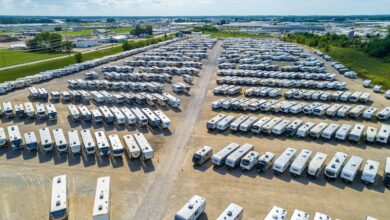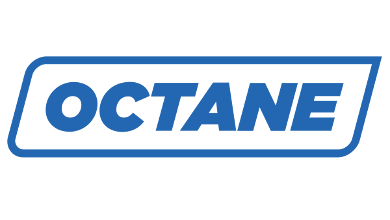Blog: How Augmented Reality Can Help Your Business
Augmented reality (AR) has existed in our imaginations for over a century but was only brought to fruition within the last 50 years. What we are seeing now during the COVID-19 pandemic is an influx of interest in AR and an expedited demand to bring it to more industries, or simply, to more people.
AR is when computer-generated images are superimposed on top of the physical world. Through headsets, glasses, or mobile devices, the viewer sees fictional objects, enhancing their non-fictional environment. Perhaps, you may be more familiar with entertainment AR such as the game Pokémon Go or the social media app Snapchat that use AR geofilters and lenses. When it comes to the practical employment within the industrial workforce, no matter the industry, AR is still thought of as emerging instead of tried-and-true. However, AR has proven to be a pragmatic tool to enhance virtual communication as well as to enable immediate and easy access to communal knowledge.
As of mid-March, at least 67 percent of employers were preparing to allow typically onsite employees to work from home. Since the spread of coronavirus and the migration to remote work, AR was no longer a what-if or experimental scenario, but a highly necessary scenario. Only essential personnel are asked to work during the quarantine, but onsite employees still need to capture and share information in real-time with other employees working in different locations, e.g. a kitchen nook or an office/playroom. And these offsite employees may need to guide or mentor onsite employees when it comes to operating certain equipment.
This pandemic hit the RV industry – a $114 billion dollar industry providing thousands of paychecks to U.S. workers – particularly hard as production slowed dramatically due to shelter-in-place orders. That said, RVs are still in demand since they offer mobile, adaptable, and temporary building solutions for medical professionals and disaster relief personnel. That means “staging units, testing facilities, command centers, sleeping units, mobile medical clinics, bathroom trailers, laundry facilities, and more.” For example, Louisiana purchased 80 RVs, and California purchased over 1,300 RVs for these aforementioned purposes. The RV industry could benefit from AR tools to maintain operations while following proper social distancing recommendations. Whether this is an OEM trying to keep production moving forward, a local dealership attempting to give a virtual RV tour, or a service department helping a customer through an issue with their unit, AR can be used to streamline communication as it can replace your physical hand with an “augmented reality hand.”
By bringing augmented reality to your business, you can aid remote work and reduce the spread of infection for those who have to work on-site in factories and warehouses.
Reduces Physical Contact
With spatial documentation (assigning and placing information at certain physical locations), the employee does not need to touch the physical documentation, but only the text/images as shown on their personal mobile devices. Phones or tablets can be assigned to individual employees to halt employees sharing instruments which in turn prevents the transmission of diseases. If there aren’t enough mobile devices to go around and employees must share, devices can be cleaned and disinfected between users. Coronavirus spreads through respiratory droplets dissipated through coughing and sneezing; those droplets can land on objects and stay stable on certain surfaces for hours up to days – hence why disinfection is mandatory.
Enables Virtual Communication
Using video calling apps that have AR features, remote employees can place 3D cursors in the receiver’s field of view to highlight and mark important locations in the physical world to efficiently direct onsite employees. This ensures accurate and concise communication with the individual on the other end of the call. Instead of two employees communicating in the physical world where disease can be transmitted by close contact, a virtual arrow can be swapped for a finger.
Stores Records
Certain workforce operation platforms engaging AR allow users to store data virtually. Employees can save anything from pictures, videos or 3D models in a central database that other individuals can access regardless of location. No emailing, leaving voicemails, or tracking down other colleagues to find information. Onsite employees can access data immediately through associated AR items indicating particular processes or procedures.
Maintains Safety Procedures
Before operating a piece of equipment, employees can easily access directions, records, and file sharing using AR. An icon that appears in the employee’s field of view on a mobile device can remind them to use the proper personal protective equipment and to follow appropriate cleaning/disinfecting procedures before and after operating the machinery.
Although AR has received favorable attention during the spread of COVID-19, the benefits are far-reaching considering the skills deficit pre-crisis. This pandemic also will change the way we view AR post-crisis when the labor shortage remains pertinent across many industries. These past few years, growing pains have been emerging for companies struggling to adapt to a transforming workforce where demographics and skill sets are shifting. Priorities must be rearranged and tactics must be created as we aim to fill vacancies in the current labor pool of disappearing expertise.
As millennials and Generation Z emerge, and Baby Boomers retire or change roles, companies can capitalize on the strengths of these changes instead of suffering from what some consider irreconcilable shortcomings. With innovative and novel training methods replacing traditional techniques, companies can foster environments where years of knowledge can be transmitted to the up-and-coming generations. By using the Real-Time Integrated Information Access (RIIA) method, coined by Ario, employers can cater to changing employee communication expectations, increase job satisfaction, and streamline employee effectiveness; and by leveraging the appropriate tools, companies can easily scale efforts to increase productivity across their workforce.



